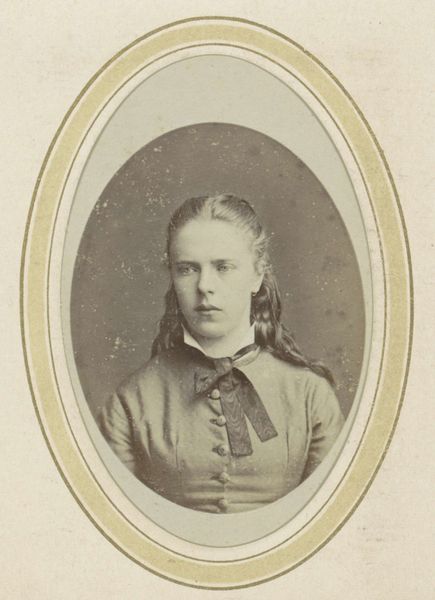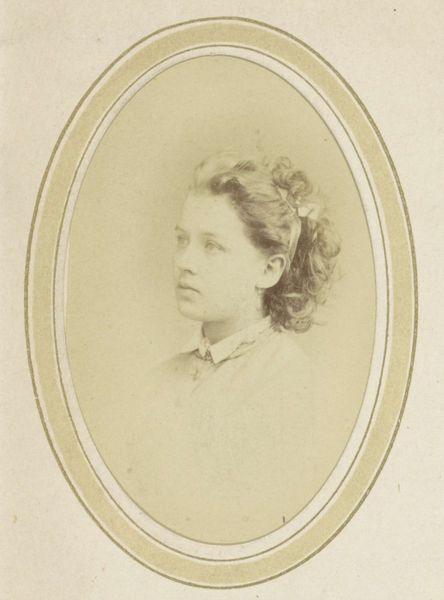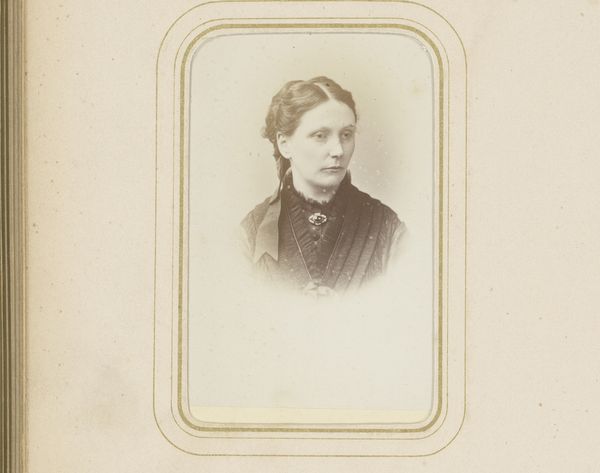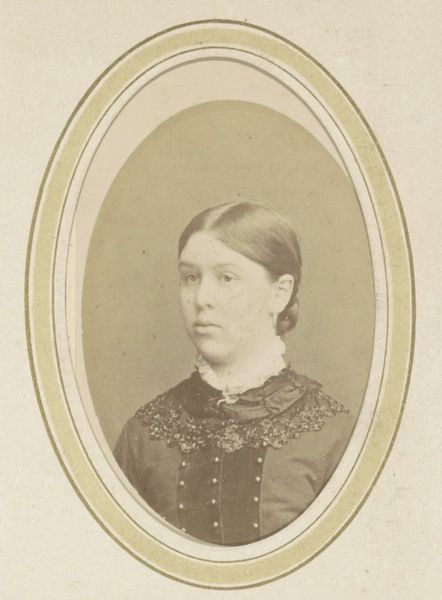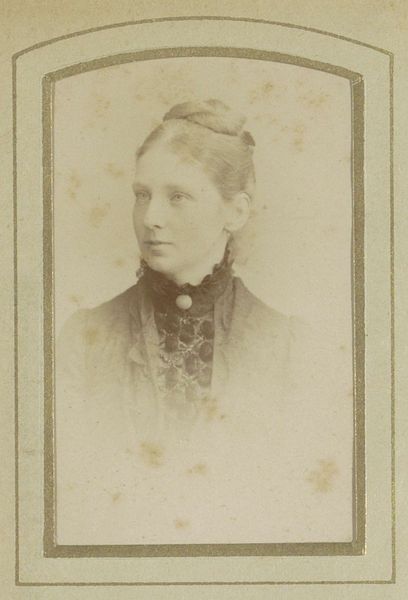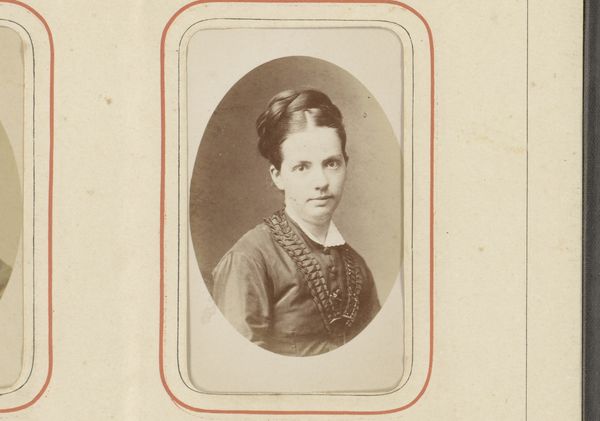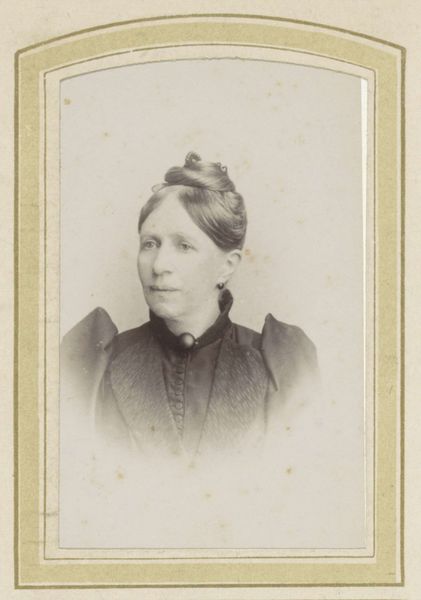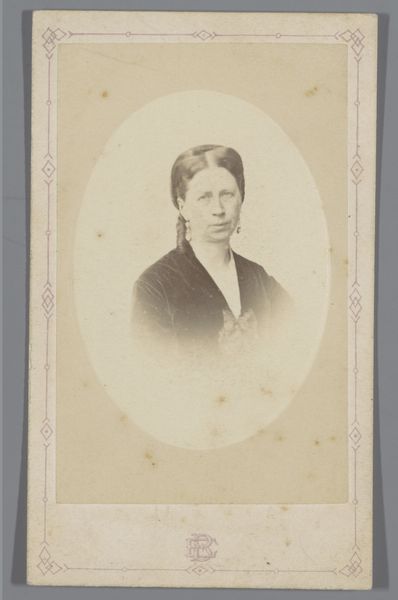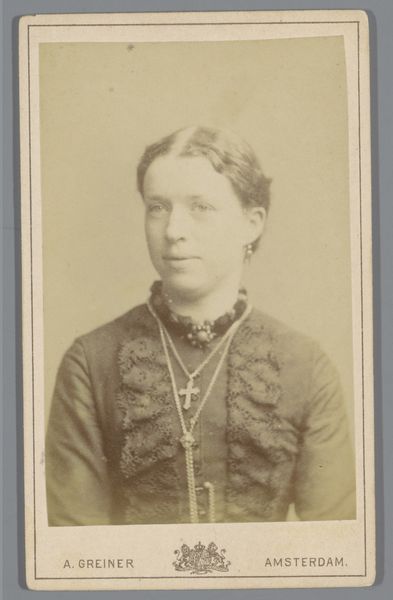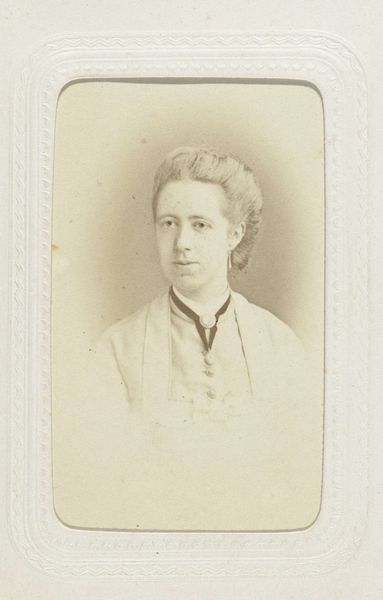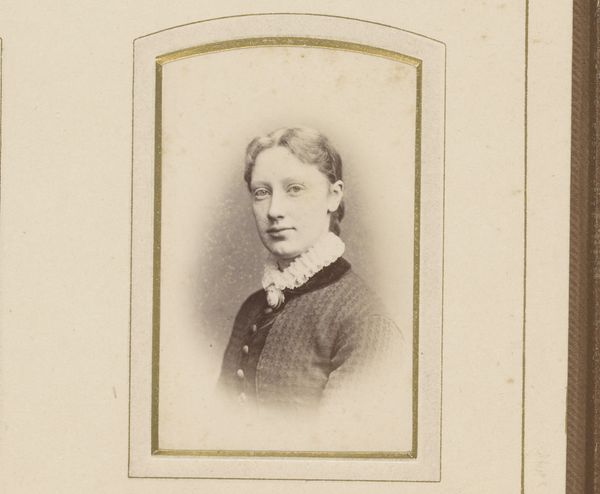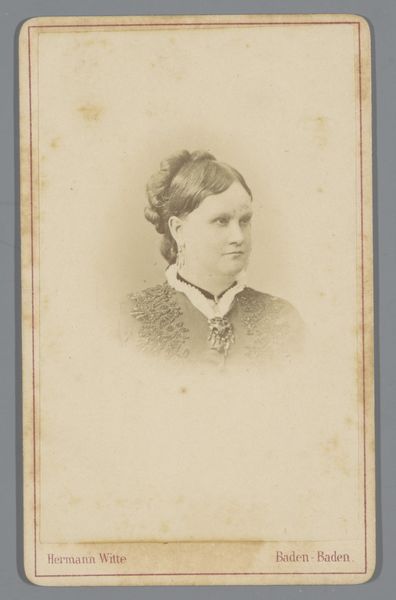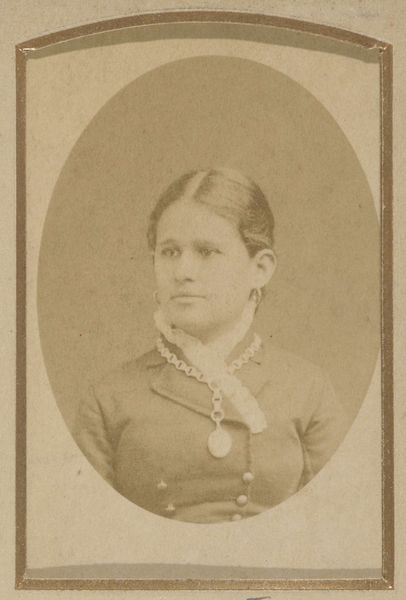
photography, gelatin-silver-print
#
portrait
#
photography
#
historical photography
#
gelatin-silver-print
#
19th century
Dimensions: height 89 mm, width 54 mm, height 100 mm, width 61 mm
Copyright: Rijks Museum: Open Domain
Editor: This is "Portret van een jonge vrouw met een bril en een strik," or "Portrait of a Young Woman with Glasses and a Bow," a gelatin silver print, most likely taken somewhere between 1866 and 1900 by Johan Christiaan Reesinck. It's such a formally posed photograph, a bit austere, and quite intriguing. What are your thoughts about its historical context? Curator: It's fascinating to consider photography's rise within the socio-economic landscape of the 19th century. Before photography, portraiture was primarily accessible only to the wealthy. The emergence of photography democratized representation. This photograph is more than a likeness; it signals changing access to art. Do you think her appearance challenges any preconceptions? Editor: Absolutely! Her glasses and bow-tie combination disrupt typical expectations of feminine presentation for that time. I can imagine how her conscious defiance of societal norms may have raised some eyebrows! Curator: Exactly. It also makes one think about visual codes, about status. Perhaps the subject is part of a burgeoning class of intellectual women at that time? A photo was a political document, wasn't it? Editor: That’s something I’ve never really considered before but that actually makes so much sense, and also helps contextualise the value and cultural capital in this one photograph. Curator: And thinking of the institutional display of the photo, a space typically reserved for other kinds of artworks: in its public presence the photograph raises interesting questions. Editor: It really highlights how images shape our perceptions, and how even a simple portrait can speak volumes about power and representation, and its continuous challenging. Curator: Exactly. Today it certainly highlights the public role that these types of pieces play.
Comments
No comments
Be the first to comment and join the conversation on the ultimate creative platform.
